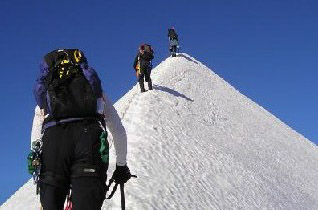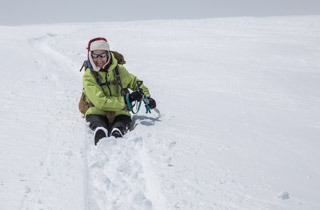Active Recovery
Active Recovery
What Is Active Recovery?
You may have just crossed the finish line for a marathon, triathlon, or another long-distance event for which you’ve been training long and hard. Maybe you’re riding a high after your event, or you might even feel beaten up. What is the best way to begin recovering? Let’s take a look at “active recovery” and its uses, benefits, and applications.
Traditionally Defined
Exercise physiology texts refer to “active recovery” as the cool-down or tapering-off phase of a single bout of exercise. Continued movement (i.e. walking after an intense run, or a few light laps in the pool after a race) may help prevent muscles from cramping and stiffening up after intense exercise; furthermore, it helps facilitate the recovery process.
Active aerobic exercise immediately following extreme exertion accelerates lactate removal and also prevents venous pooling or the tendency for blood to pool in the lower extremities if an exerciser stops moving immediately. By continuing to move around gently, the muscles continue to pump blood back up to the heart.
In contrast, “passive recovery” (i.e. lying down, taking a cool shower, or getting a massage immediately after exertion) does not seem to have the same benefits as active recovery and should be included after active recovery or as a separate session altogether. “Active recovery” can also be used in the broader sense, after a periodized training phase and not just a single training session.


Active Recovery (Supplemental Low Intensity) Workouts
Experienced exercisers can benefit greatly from active recovery workouts that are significantly reduced in intensity, either later the same day or the next day. For trekkers, that might mean going on a light bike ride or walking for 15-30 minutes to stretch out and allow the body to work through any residual soreness. For the alpinist, that might include doing some light reverse wrist curls for the forearms, going for a gentle swim, or even doing some core work involving high repetitions with no weight.
The sport climber might complete a short session on the wall that focuses on keeping arms below shoulder level, practicing footwork, or traversing to find restful positions, avoiding any flash pump. Marathoners might get on a bicycle for 30 minutes; swimmers might enjoy a walk.
And the layperson may simply consider a stroll with their dog, light yard work or gardening, or some yoga. The harder you train, the more important it is to recover. But that recovery will look different for everyone.
Active recovery should 1) be easy exertion (<60% MHR) and 2) involve cross-training, using different muscle groups than those used in your primary activity — say, roller blading for the rock climber, rowing for the cross-country skier, or shooting hoops for the downhill skier.
Benefits
If you have ever been so sore following a hard workout that your muscles ache, you may benefit from an “active recovery” session described above. Not only can such light sessions help you relieve soreness and reduce stiffness but they can also help speed recovery so that you can return to training more quickly. If your quadriceps are sore after a ski trip or hike, plan to move for 20-30 minutes at low intensity including some targeted stretching.
When Should You Avoid Exercise?
Avoid exercising if you are:
- Injured to such an extent that you are unable to safely train in any way
- Pregnant with any contra-indications specific to childbearing
- Under specific orders from a medical professional not to
- Recovering from recent surgery
- Severely overtrained and requiring time to rest
- Mentally incapacitated such that you may hurt yourself with overzealous training
- Feeling illness below the head (“below the head, stay in bed.”) If you are taking antibiotics, fighting with a chest cold, coughing spasmodically, feverish, etc., you may delay healing by exercising. It is probably best to take several days off to rest, rehydrate, and recover).
In many other cases, it probably is okay to do something, even if you reduce the intensity of your scheduled workout.
Special Case: Exercising While Injured
Strengthening the opposite limb from an injured body part can result in training benefits and overall reduced atrophy for the affected limb. Work in whatever range of motion you can to prevent muscle atrophy, promote recovery, and return you to pre-injury strength as quickly as possible.

When I was recovering from a broken wrist, a specialist suggested doing isometric exercises (a type of contraction which involves zero change in muscle length, but they still contract; examples include a plank or wall squat.) This helped prevent further loss of muscle mass and got me back to performance more quickly.
While there are certainly instances where you will benefit from taking time off, the longer you are inactive, the more atrophy you will experience and the longer you may be away from your activity. Remain as active as you can to keep your cardiovascular and musculoskeletal systems strong and healthy. By staying active but not overdoing it, you will be able to keep doing what you love.






